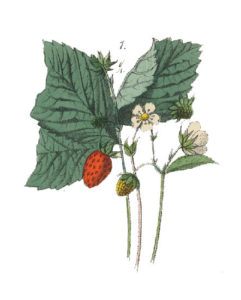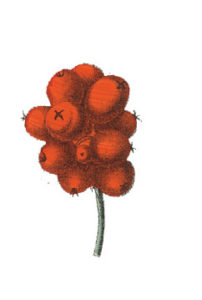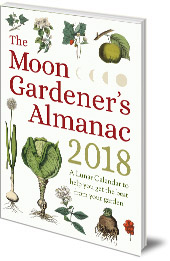Get the best from your garden with The Moon Gardener’s Almanac
by Floris Books • 11 August 2017 • Gardening, The Moon Gardener's Almanac • 0 Comments
Every gardener wants their plants and flowers to reach their full potential. Could lunar rhythms be the key to abundant and healthy growth? Jardinez avec la Lune is a gardening staple in its native France, with over 2 million copies sold. The Moon Gardener’s Almanac 2018 makes this practical guide available in English for the first time. This essential annual will help you harness the moon’s influence as part of your normal gardening work. Day by day, the calendar suggests favourable times for working with leaves, flowers, fruit or roots.
This extract from The Moon Gardener’s Almanac 2018, explores the relationship between plants and their surroundings. You can also view a sample of a calendar page below the extract.
Plants in their Environment 
As a living being fixed in the soil, a plant is entirely dependent on its environment. On one hand, it raises its stem towards the sky to catch the light and warmth of
the Sun, while on the other, it plunges its roots into the Earth looking for everything it needs to grow and reproduce. Food, water, minerals and cosmic life forces are all essential to a plant’s survival, and the condition of the soil is vitally important in ensuring these resources are successfully delivered.
Cosmic forces
We can aid plants’ sensitivity to cosmic influences by doing all we can to increase their receptiveness. Suppressing artificial obstacles to cosmic forces, making the atmosphere permeable, and introducing easily assimilated food into the soil all help to optimise plants’ sensitivity. By making the helpful cosmic forces as accessible as possible, we will see the benefit in the roots, leaves, flowers and fragrances of our gardens. Most cosmic forces, in particular those of the Moon, act only indirectly on plants; before roots can take them in, they are absorbed by the soil – depending on its receptivity and the current position in the lunar cycle. The health and vigour of our vegetables call for well-balanced, aerated and receptive soil.
Soil
In order to develop properly, plants need air, light and soil in which to take root and absorb water and nutrients. These elements are more easily available to plants when the soil’s fertility has been restored with beneficial manures and enrichments, which are active during the most favourable lunar dates.
Every soil is different; whether sandy, clay or lime, it will need to be loosened regularly and be fertilised with appropriate growth aids and enlivening manures. Ensure chemical fertilisers are not used: besides their harmful effect on crops, they make the soil impervious to the influence of cosmic forces. When gardening with the Moon, feed soil exclusively with wellripened compost, animal manure, green manures and liquid slurries of vitalising plants, for example nettles and comfrey. Soil should not remain bare between two crops: depending on the season, sow clover, rye, vetch or mustard to contribute helpful organic matter and protect the soil from weathering.
Air and light
Sunlight is integral to a plant’s development. Gardeners should make sure that their growing space has the maximum amount of light, but shouldn’t hesitate to plant a hedge of mixed bushes on the side of the prevailing wind for protection. The hedge will filter the air, protecting plants from chemical treatments which might have been applied in neighbouring properties, and will also shelter birds that feed on aphids, caterpillars and unwanted insects.

 About The Moon Gardener’s Almanac 2018
About The Moon Gardener’s Almanac 2018
Whether you’re growing delicious vegetables or cultivating beautiful flowers, a flourishing plot fills any gardener with joy and satisfaction. The Moon Gardeners’ Almanac 2018 makes it easy to plan your gardening. By planting in harmony with lunar rhythms, you can grow better tasting, more plentiful veggies, and healthier plants and flowers. This essential month-by-month guide is fully illustrated with easy-to-follow diagrams and space for your own notes. It will make a welcome addition to any gardener’s shelf.
We’d love to know your thoughts on this brand new book. Let us know on Twitter or Facebook.